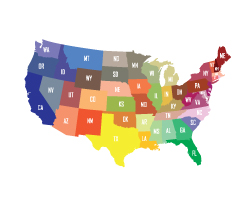Cycling under the influence cases are very similar, in many states and in many respects, to traditional DUI (driving under the influence) cases. The critical inquiry in a cycling under the influence case is “how is the term ‘vehicle’ defined?”
By way of background, driving under the influence cases, whether referred to as a DUI, DWI, DWAI, OUI, OUIL, or any other acronym, all have certain things in common. They each require the proof, beyond a reasonable doubt, of certain elements. These elements typically include (i) driving (ii) a vehicle (iii) while under the influence (however that phrase is defined in the state in question) or (iv) while having a blood alcohol level of .08% or higher.
Therefore, cycling under the influence cases will usually turn on the question of whether a bicycle fits the definition of the term “vehicle” in the state where the arrest took place.
For cases involving cycling under the influence in California, for example, there are special laws that govern bicyclists. The California Vehicle Code created an exception for devices moved exclusively by human power, meaning that a bicycle is not a “vehicle” for purposes of the California DUI laws.
However, the California Vehicle Code does provide that it is unlawful for any person to ride a bicycle upon a highway while under the influence of alcohol (or drugs) and that all persons arrested for violating this section are required to give a test of their blood or breath (or urine, if drugs are suspected), just as in a driving under the influence case. There is no “per se” violation relating to a particular blood alcohol level (such as the .08 laws), as there are in traditional DUI cases.
A conviction of violating the California cycling under the influence statute subjects the violator to a base fine of $250.00. This is substantially less than the fines imposed for DUI cases involving “vehicles”.







